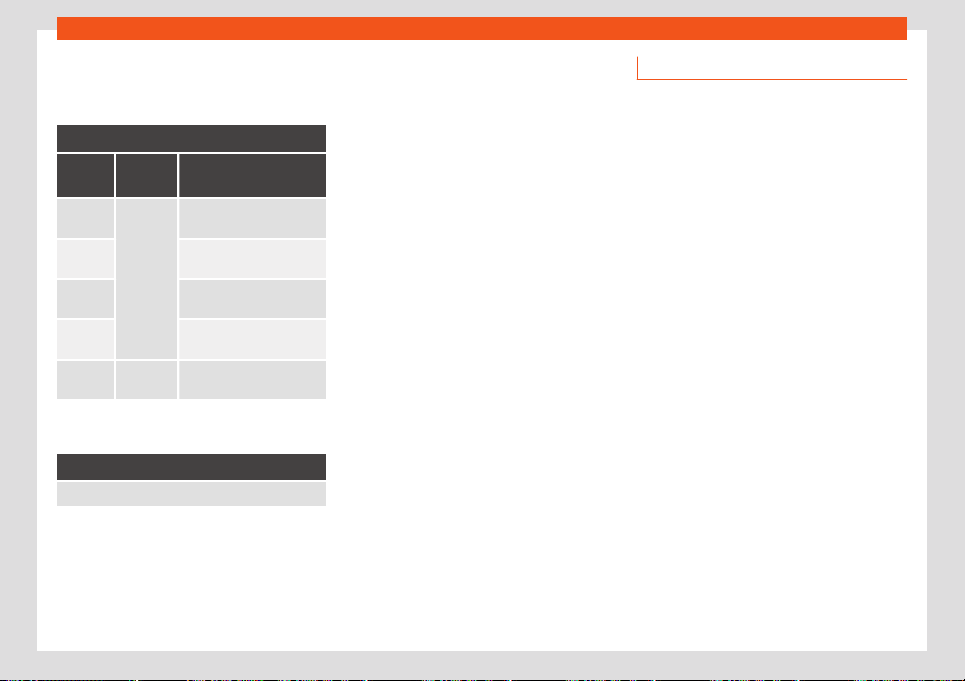Loading ...
Loading ...
Loading ...

SEAT Maintenance Programme
How to know which type of service needs
t
o his v
ehicl
e
●
Check the t
abl
es below:
Oil change service
a)
PR No.
Type of
service
Service interval
QI1
Fixed
Every 5000 km or after
1 year
b)
QI2
Every 7500 km or after
1 year
b)
QI3
Every 10000 km or aft
er
1 year
b)
QI4
Every 15000 km or aft
er
1 year
b)
QI6 Flexible
Accor
ding to the service in-
t
erv
al displ
ay
a)
The data are based on normal conditions of use.
b)
Whatever happens first.
Inspection Service
a)
According to the service interval display
a)
The data are based on normal conditions of use.
Bear in mind the inf
ormation about the speci-
fications of the engine oil accor
ding t
o the
VW st
andar
d
›››
page 346.
Particular characteristics of the Flexible
Service
Regarding the Flexible Service, the oil
change service only has to be performed
when the vehicle needs it. To calculate when
you have to carry out this service, take into
account the individual conditions of use and
personal driving style. A major component of
the flexible service the use of LongLife oil in-
stead of conventional engine oil.
Bear in mind the information about the speci-
fications of the engine oil according to the
VW standard
›››
page 346.
If you do not want to the flexible service
you can select the fixed service However,
a fixed service may affect service costs
The Service Advisor will gladly advise you.
Service interval display
At SEAT, the dates of the services are indica-
ted by the service interval display on the in-
strument panel
›››
page 83 or in the Vehicle
settings menu of the infotainment system
›››
page 89.
The service interval display gives information
for service dates that involve an engine oil
change or an inspection. When the time for
the corresponding service comes, additional
work required, such as the change of brake
fluid and the spark plugs, can be carried out.
Information about the terms of use
The service intervals and groups are usually
based on normal conditions of use.
If, on the other hand, the vehicle is under ad-
v
erse conditions of use, some of the work
must be carried out before the next service
period or even between service intervals.
Conditions of use adverse include:
●
The use of fuel with a high sulphur content.
●
Frequent short trips.
●
Letting the engine idle for a long period of
time, as in the case of taxis.
●
Using the vehicle in ar
eas with thick dust.
●
Frequent driving with a trailer (depending
on equipment).
●
Using the vehicle mostly in situations with a
lot of traffic and stops (e.g. in a city).
●
Using the vehicle mostly in winter.
This applies especially for the following
parts (depending on equipment):
●
Dust and pollen filter
●
Air Care allergen filter
●
Air filter
●
Toothed chain
●
Particulate filter
●
Engine oil
»
367
Loading ...
Loading ...
Loading ...